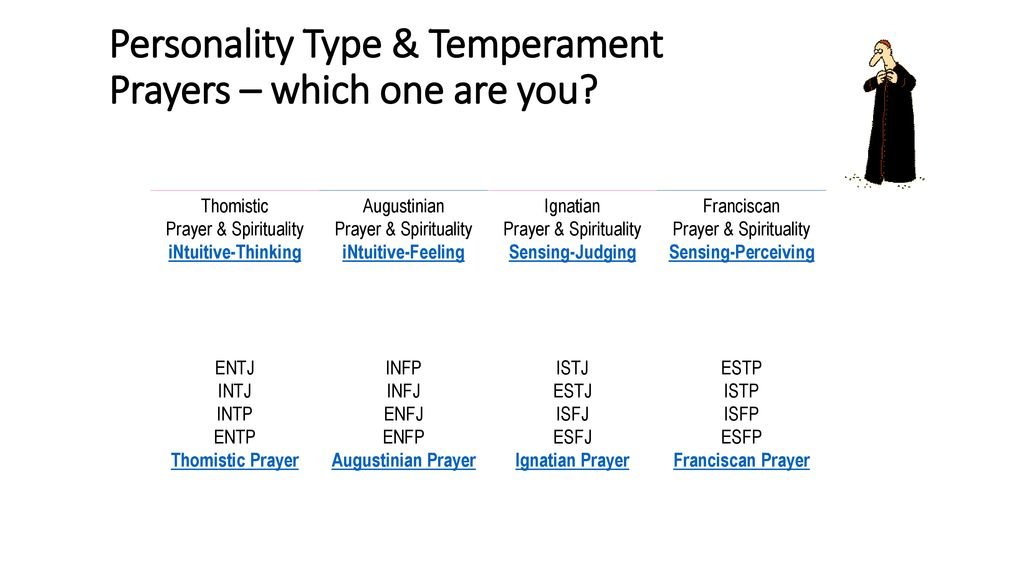Wolfe: Modified Prayer of St. Francis
This week, we discussed the classic book on personality types and prayer styles, Prayer and Temperament: Different Prayer Forms for Different Personality Types, by Monsignor Chester P. Michael and Marie C. Norrisey. The book is based on the Myers-Briggs Type Indicator Assessment, and explains five types of personal prayer developed over the centuries.
If your prayer type is Augustinian (Intuition, Feeling NF)—which finds prayer most meaningful when Scripture or a message is written for or speaks directly to you—this modification of the Prayer of St. Francis may suit you. In this prayer, adapted by a spiritual director, Jane Wolfe, God/Jesus/The Holy Spirit is praying, speaking directly to you. Jane’s premise is that we can turn any petition into listening, thanksgiving, and praise—whatever we wish.
On the other hand, the more traditional version of the Prayer of St. Francis may be more meaningful to you when you pray directly to God. So, I have also included it.
Prayer of St. Francis
Lord, make me an instrument of Your peace.
Where there is hatred, let me sow love;
where there is injury, pardon;
where there is doubt, faith;
where there is despair, hope;
where there is darkness, light;
and where there is sadness, joy.
O, Divine Master,
grant that I may not so much seek
to be consoled as to console;
to be understood as to understand;
to be loved as to love;
for it is in giving that we receive;
it is in pardoning that we are pardoned;
and it is in dying that we are born to eternal life.
Use it as a monthly reading, especially in Advent or Lent. Read one line daily for two days, as if God/Christ/Holy Spirit/your Higher Power says this to you. Then, begin again on the first day of each month.
1. I am the instrument of your peace.
2. Where there is hatred, I sow love.
3. Where there is injury, I pardon.
4. Where there is discord, I bring union.
5. Where there is doubt, I give faith.
6. Where there is despair, I bring hope.
7. Where there is darkness, I bring light.
8. Where there is sadness, I bring joy.
9. I console you.
10. I understand you.
11. I love you.
12. I give myself to you.
13. I pardon you.
14. I die for you.
15. I give you eternal life.
—Modified by Jane Lee Wolfe, “Spiritual Health and Fitness for the 21st Century,” Woodstock, Vermont. www.bogchapel.org




